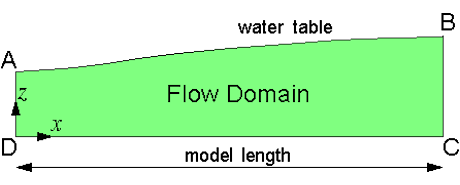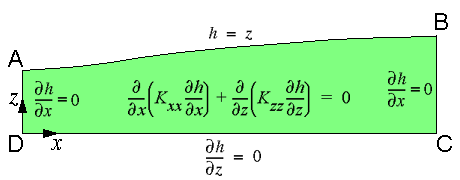For a two-dimensional vertical section, the boundaries of the flow domain are as follows:
The top boundary (AB) is the water table, which is assumed to lie close to land surface.
The two vertical boundaries (BC and AD) and the bottom boundary (DC) are no-flow boundaries.
The no-flow boundaries might represent groundwater flow divides or low hydraulic conductivity bedrock that bounds the basin.
Note that by specifying the position of the water table, it is assumed that the pattern of recharge and discharge is such that the water table is maintained at a steady state.







